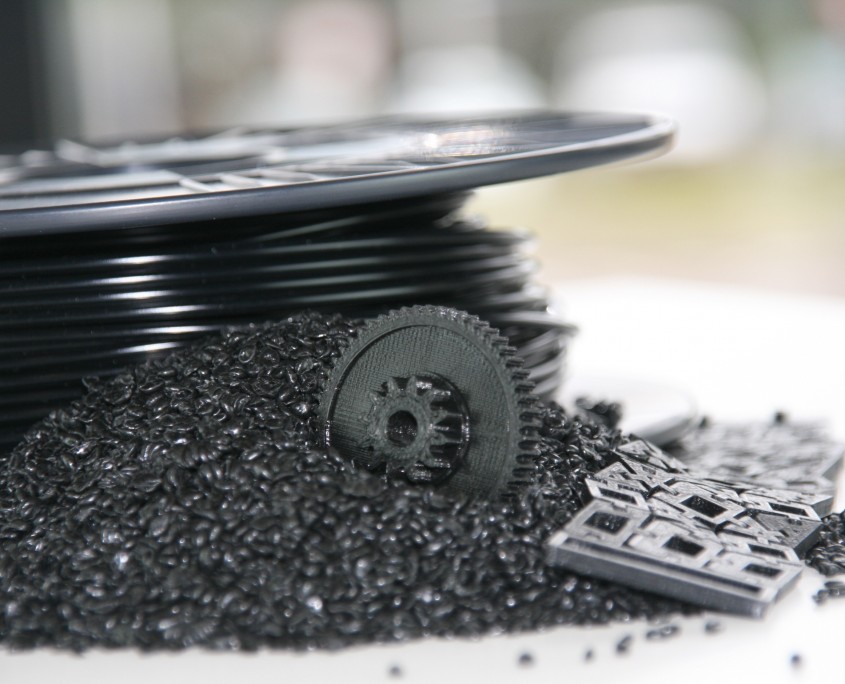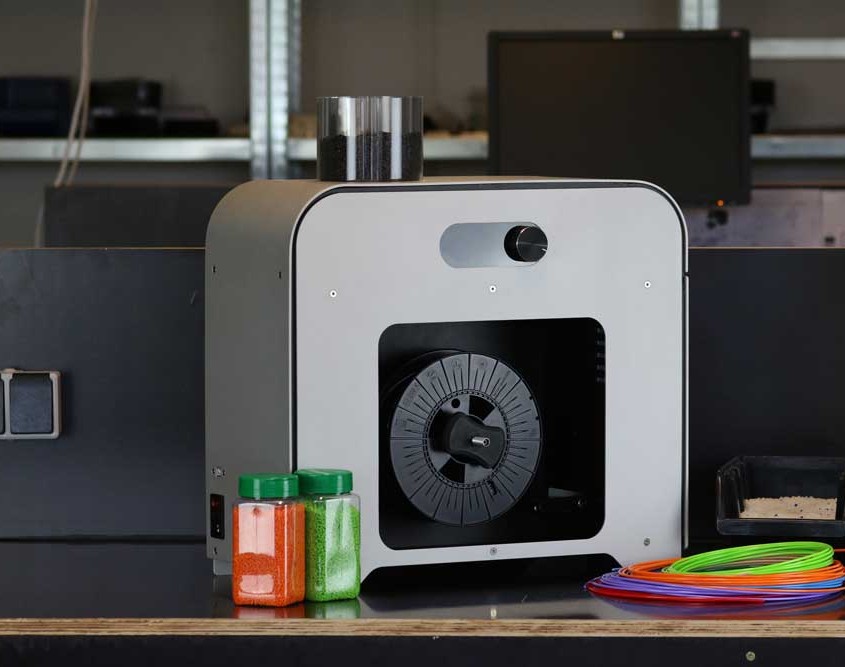
A new desktop-sized filament extruder was announced by 3devo of Netherlands.
They bill the machine as an “industrial desktop filament extruder”, and offer two models. They’re intended to transform inexpensive plastic pellets into usable 3D printer filament.
Now first before we get into the machine itself, I must declare myself highly skeptical of any desktop filament production unit. I’ve seen many announced – and fail – over the past years. The reasons for these failures have typically included:
- No means to ensure consistent filament diameter and roundness
- No system to properly collect the produced filament on a tight spool
- No means to eliminate moisture from the filament
- No means to gradually cool the hot filament being extruded
- Poor capacity
- Expectation of use of random plastics as input to achieve a consistent output mix
- And more
So you can see there’s many challenges to overcome with a filament production system. In fact, if you’ve ever visited an actual filament production line you’d see rather large machines and systems in place to produce high-quality filament. One item you’d typically see is a very long water tank set to a very specific temperature. The tank is used to very gradually cool the hot extruded filament as it travels rapidly through the water on its way to a take-up spool.
And then we have the desktop filament extruders, which typically solve none of these issues, resulting in essentially unusable filament, particularly on today’s “picky” 3D printers that require very high-quality filament to perform at top operation.
Does the new mechanism from 3devo handle these challenges?

Actually, they hit several of them.
The units include a method of measuring extruded filament diameter. A “sensor”, perhaps a laser, can ensure up to 0.043mm accuracy.
They include a spool mount that can accept multiple spool sizes for take-up of newly extruded filament, and an automatic winder.
There are three heating zones, but it is unclear if this heat is used to remove moisture from the plastic, either before or after extrusion.
There is a “powerful cooling system for high speed extrusions” that, if properly controlled, could roughly approximate a water tank process.
The 3devo units seem to have a relatively low pellet capacity, judging by the small hopper visible in the images, but they do include a sensor to indicate “out of pellets”.
The mechanisms appear to be constructed from good quality components with the intention of providing reliability and durability. There’s a number of very useful sensors and control systems that should enable relatively easy and consistent use.

The 3devo units appear to be in a much better position than many of the previous filament production systems I’ve seen in the past, as they seem to cover off at least some of the major issues neglected by others.
That all said, I cannot expect the 3devo units to equal the quality of factory-sized systems, certainly at least in terms of capacity (the 3devo units can produce 0.7kg per hour). But it’s possible they may be of some utility in certain situations.
You can currently purchase either of two units, a “NEXT” for €3,100 (USD$3,375), or an “ADVANCED” version for €3,950 (USD$4,300). The difference? The ADVANCED version is capable of higher extrusion temperatures with additional heat controls and thus can produce filaments of a wider range of materials.
That all said, these units don’t solve one of the basic problems with this approach: you must provide good quality, consistent plastic input to achieve good quality filament. Garbage in, garbage out. That’s something you’ll have to solve for yourself.
Via 3devo

